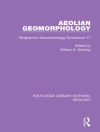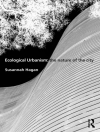Arsenic contamination poses a major environmental problem, especially in Southeast Asian countries like Bangladesh and India. Threatening the health of millions of people due to arsenic’s toxicity and carcinogenicity, the major routes of arsenic exposure for humans are either through drinking water or crops. Rice is the crop most affected by arsenic owing to its cultivation in major arsenic contaminated areas, biogeochemical factors in the soil during rice growth, and specific features of rice that enable it take up more arsenic than other crop plants.
This book addresses the problem of arsenic by pursuing a holistic approach. It presents the status quo in different parts of the world (North and South America, Europe, Asia, etc.) and provides essential information on food-related arsenic exposure risks for humans, and possible preventive and curative measures for tackling arsenic poisoning. It covers the arsenic contamination status of rice, rice-based products, other vegetables, fishes, mushrooms, and other foods, with a special focus on rice-arsenic interactions. The mechanisms of arsenic uptake, translocation and distribution in plants and grains are also explained. In closing, the book reviews a variety of prospective agronomic and biotechnological solutions to the problem of arsenic accumulation in rice grains.
The book is intended for a broad audience including researchers, scientists, and readers with diverse backgrounds including agriculture, environmental science, food science, environmental management, and human health. It can also be used as an important reference guide for undergraduate and graduate students, university faculties, and environmentalists.
Tabella dei contenuti
- The Status of Arsenic Contamination in India. - Arsenic Environmental Contamination Status in South Asia. - Arsenic Contamination Status in North America. - Arsenic in Latin America: Part I. - Arsenic in Latin America: Part II. Arsenic Contamination Status in Europe, Australia, and Other Parts of the World. - Global Market and Field Studies of Arsenic Accumulation in Rice. - Arsenic in Rice-Based Food Products for Adults and Children. - Arsenic in Wheat, Maize, and Other Crops. - Arsenic in Mushrooms, Fish, and Animal Products. - A Brief Status Report on Arsenic in Edible Vegetable Species. - Potential Exposure to Arsenic and Other Elements from Rice in Bangladesh: Health Risk Index. - Preventive and Therapeutic Strategies for Acute and Chronic Human Arsenic Exposure. - Mechanisms of Arsenic Uptake, Transport, and
in planta Metabolism in Rice. - Molecular Physiology of Arsenic Uptake, Transport, and Metabolism in Rice. - Safeguarding Rice from Arsenic Contamination Through the Adoption of Chemo-agronomic Measures. - Agricultural Water Management Practices and Environmental Influences on Arsenic Dynamics in Rice Field. - Biotechnological Strategies to Reduce Arsenic Content in Rice.
Circa l’autore
Dr. Sudhakar Srivastava is presently working as an Assistant Professor at the Institute of Environment and Sustainable Development (IESD), Banaras Hindu University (BHU). He completed his M.Sc. and Ph.D. in Botany at the University of Lucknow. He also served as a Scientific Officer at Bhabha Atomic Research Centre (BARC), Mumbai from 2009 to 2014. He has more than sixteen years of research experience in the field of plant-metal interactions, with a major focus on arsenic stress responses in plants. He has published 66 research articles and 21 review and letter articles in high-impact international and national journals. He has also received several awards for his contributions, including a Young Scientist Award from the National Academy of Sciences, India (NASI), Allahabad in 2011, Young Scientist Award from Uttar Pradesh Council of Science & Technology (UPCST) in 2013-2014, and Young Scientist Award from the Science and Engineering Research Board (SERB) in 2015. Dr. Srivastava is also an Associate of the National Academy of Agricultural Sciences (NAAS) and a life member of several societies as well as non-governmental organizations and serves as an Associate Editor for two respected international journals: Acta Physiologiae Plantarum and Frontiers in Ecology and Evolution.












